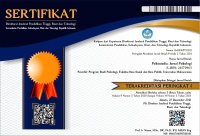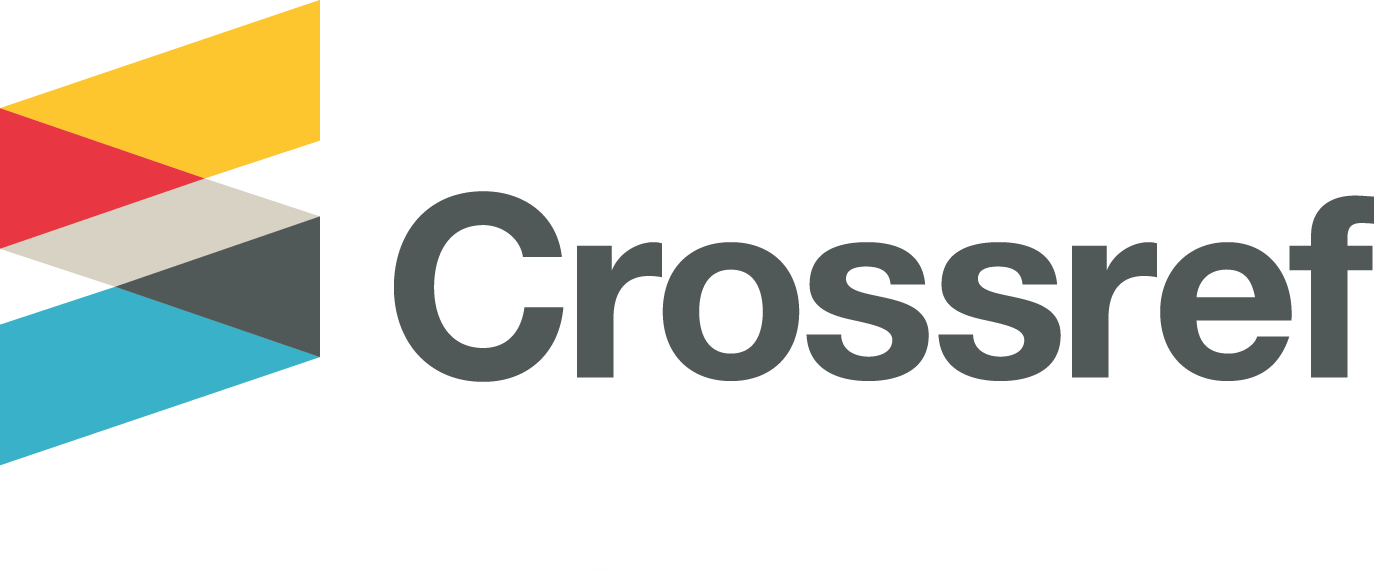Client Centered Therapy for Clients with a Diagnosis of Major Depression
Abstract
This research aims to reduce symptoms of depression using client centered therapy (CCT) and after that a test is carried out to see its effectiveness. The definition of depression according to the World Health Organization is a mental health disorder characterized by intense feelings of sadness, reduced interest in things you usually enjoy, decreased energy, feelings of guilt, low self-esteem, insomnia, reduced appetite, fatigue, lack of concentration and lack of thinking. to suicide (WHO, 2023). The subject in this study was a 24-year-old man who was diagnosed with severe depression. The approach used is a quantitative approach with an experimental method using a Single Case Design or Single-Subject Design. The data obtained used observation methods, interviews, psychological tests consisting of cognitive tests (WAIS), personality (Grafis, Wartegg, SSCT) and inventory, namely the DASS scale (Depression Anxiety Stress Scale). The research results showed that client centered therapy (CCT) was effective in reducing depressive symptoms experienced by the subjects. After carrying out quantitative measurements, it showed a decrease in depression scores from the very severe category (26) to the normal category (1). Qualitatively, it shows a reduction in depressive symptoms in the subjects, which can be seen from cognitive changes that become more capable of positive thinking and changes in more productive behavior. As for further research, it is hoped that client centered therapy can be used to treat clients with other diagnoses to enrich research results related to client centered therapy.
Penelitian ini bertujuan untuk menurunkan gejala depresi dengan menggunakan client centered therapy (CCT) dan setelah itu dilakukan uji untuk melihat efektivitasnya. Defini depresi mengacu pada World Health Organization merupakan gangguan kesehatan mental yang ditandai dengan perasaan sedih yang intens, berkurangnya minat terhadap sesuatu yang biasa disenangi, penurunan energi, adanya perasaan bersalah, rendah diri, insomnia, berkurangnya nafsu makan, kelelahan, kurang konsentrasi dan adanya pemikiran untuk bunuh diri (WHO, 2023). Subjek pada penelitian ini yaitu seorang laki-laki berumur 24 tahun yang terdiagnosa mengalami depresi berat. Pendekatan yang digunakan adalah pendekatan kuantitatif dengan metode eksperimen menggunakan rancangan Single Case Design atau Single-Subject Design. Data yang diperoleh menggunakan metode observasi, wawancara, tes psikologi yang terdiri dari tes kognitif (WAIS), kepribadian (Grafis, Wartegg, SSCT) dan inventori yaitu skala DASS (Depression Anxiety Stress Scale). Hasil penelitian menunjukkan bahwa client centered therapy (CCT) efektif untuk menurunkan gejala depresi yang dialami oleh subjek. Setelah dilakukan pengukuran secara kuantitatif menunjukkan penurunan skor depresi dari kategori sangat parah (26) menjadi kategori normal (1). Secara kualitatif menunjukkan berkurangnya gejala depresi pada subjek yaitu terlihat dari perubahan kognitif yang menjadi lebih mampu berpikir positif dan perubahan pada perilaku yang lebih produktif. Adapun untuk penelitian selanjutnya, diharapkan dapat menggunakan client centered therapy untuk menangani klien dengan diagnosis lain guna memperkaya hasil penelitian terkait client centered therapy.
Keywords
Full Text:
FULL TEXTReferences
Brodley, B. T. (1999). Reasons for responses expressing the therapist’s frame of reference in client-centered therapy. The Person-Centered Journal, 6(1), 4–27. https://adpca.org/article/6_1/reasons-for-responses-expressing-the-therapists-frame-of-reference-in-client-centered-therapy/
Desousa, A. (2015). Client centered therapy. Indian Journal of Applied Research, 4(2), 9–13. https://doi.org/10.36106/ijar
Erekson, D. M., & Lambert, M. J. (2015). Client‐centered therapy. In The Encyclopedia of Clinical Psychology (First Edit, pp. 1–5). John Wiley & Sons, Inc. https://doi.org/10.1002/9781118625392.wbecp073
Goldman, R. N., Greenberg, L. S., & Angus, L. (2006). The effects of adding emotion-focused interventions to the client-centered relationship conditions in the treatment of depression. Psychotherapy Research, 16(5), 537–549. https://doi.org/10.1080/10503300600589456
Gonçalves, M. M., Mendes, I., Cruz, G., Ribeiro, A. P., Sousa, I., Angus, L., & Greenberg, L. S. (2012). Innovative moments and change in client-centered therapy. Psychotherapy Research, 22(4), 389–401. https://doi.org/10.1080/10503307.2012.662605
Greenberg, L. S., & Watson, J. (1998). Experiential therapy of depression: Differential effects of client-centered relationship conditions and process experiential interventions. Psychotherapy Research, 8(2), 210–224. https://doi.org/10.1080/10503309812331332317
Hadi, I., Fitriwijayanti, Usman, D, R., & Rosyanti, L. (2017). Hubungan depresi dan dangguan suasana hati. Health Information Jurnal Penelitian, 9(1), 34–48. https://myjurnal.poltekkes-kdi.ac.id/index.php/HIJP
Henriquez, S. A., Brett, R., Alexander, J., Pratt, J., & Roberts, C. W. (2009). Neuropsychiatric disease and Toxoplasma gondii infection. Neuro Immuno Modulation, 16(2), 122–133. https://doi.org/10.1159/000180267
Hill, C. E., & Nakayama, E. Y. (2000). Client-centered therapy: Where has it been and where is it going? A comment on Hathaway (1948). Journal of Clinical Psychology, 56(7), 861–875. https://doi.org/10.1002/1097-4679(200007)56:7<861::aid-jclp5>3.0.co;2-j
Istiono, A. (2019). Person centered therapy untuk menurunkan depresi pada pasien skizoafektif. Seminar Nasional Multidisiplin, 2, 180–191. https://ejournal.unwaha.ac.id/index.php/snami/article/view/688
Johnson, R., & Christensen, L. (2014). Educational research quantitative, qualitativ, and mixed approarches (Fifth edit). SAGE Publications.
Kalin, N. H. (2020). The critical relationship between anxiety and depression. American Journal of Psychiatry, 177(5), 365–367. https://doi.org/10.1176/appi.ajp.2020.20030305
Kusuma, C. T. (2020). Client centered therapy untuk subjek dewasa dengan gangguan depresi berat. Jurnal Psikologi Malahayati, 2(1), 29–35. https://doi.org/10.33024/jpm.v2i1.2427
Lubis, H., Oktaviani, M. A., Rahmi, A. S., & ... (2016). Musik kejien dalam menurunkan tingkat kecemasan, stres, dan depresi. Psikostudia: Jurnal Universitas Mulawarman, 5(1), 39–64. https://doi.org/http://dx.doi.org/10.30872/psikostudia.v5i1.2279
Mary, J., & Leslie, J. (2009). Depression in parents, parenting, and children opportunities to improve identification, treatment, and prevention (Mary Jane England and Leslie J. Sim. (ed.)). National academies press (US). http://www.nap.edu/
Maslim, R. (2013). Diagnosis gangguan jiwa rujukan PPDGJ III dan DSM IV. FK Unika Atmajaya.
Mayasari, N. N. W. T. (2008). Gambaran umum depresi. Jurnal Medika Udayana, 2(11), 1–19. https://ojs.unud.ac.id/index.php/eum/article/view/7034
Merry, T., & Brodley, B. T. (2002). The nondirective attitude in client-centered therapy: A response to Kahn. Journal of Humanistic Psychology, 42(2), 66–77. https://doi.org/10.1177/0022167802422006
Nevid, J., & Rathus, S. (2005). Psikologi abnormal. Erlangga.
Rifayanti, R., Pulunggono, G. P., Azyza, Z. F., & Setiani, R. (2019). Penerapan konseling dan penentuan keinginan bunuh diri melalui alat proyeksi (suicidie desire projective) bagi individu yang teridentifikasi depresi. Psikostudia : Jurnal Psikologi, 6(1), 50–60. https://doi.org/10.30872/psikostudia.v6i1.2363
RISKESDAS. (2018). Laporan nasional RISKESDAS 2018. BALITBANGKES 2019.
Rosada, U. (2016). Model pendekatan konseling client centered dan penerapannya dalam praktik. Bimbingan Dan Konseling, 6(1), 14–25. https://doi.org/http://dx.doi.org/10.25273/counsellia.v6i1.454
Townsend, A. K., Clark, A. B., McGowan, K. J., Buckles, E. L., Miller, A. D., & Lovette, I. J. (2009). Disease-mediated inbreeding depression in a large, open population of cooperative crows. Proceedings of the Royal Society B: Biological Sciences, 276(1664), 2057–2064. https://doi.org/10.1098/rspb.2008.1852
WHO. (2023). Depressive disorder (depression). https://www.who.int/news-room/fact-sheets/detail/depression
Yao, L., & Kabir, R. (2023). Person-centered therapy (Rogerian Therapy). National Library for Medicine. https://www.ncbi.nlm.nih.gov/books/NBK589708/
Zuhri, I., & Rohmah, F. A. (2023). Cognitive behavior therapy pada individu yang mengalami depresi. Psikostudia : Jurnal Psikologi, 12(2), 184–191. https://doi.org/10.30872/psikostudia.v12i2.10264
DOI: http://dx.doi.org/10.30872/psikostudia.v12i4.11958
Refbacks
- There are currently no refbacks.
Copyright (c) 2023 Dwita Kurniasih Bintara Sari & Faridah Ainur Rohmah

This work is licensed under a Creative Commons Attribution-ShareAlike 4.0 International License.
Psikostudia: Jurnal Psikologi is indexed by :
PSIKOSTUDIA: Jurnal Psikologi Published by Faculty of Social and Political Siences, University of Mulawarman, Samarinda, East Kalimantan and This work is licensed under a Creative Commons Attribution-ShareAlike 4.0 International License.
_________________________________________
PSIKOSTUDIA: Jurnal Psikologi
Department of Psychology
Faculty of Social and Political Siences, University of Mulawarman
Jl. Muara Muntai Kampus Gn. Kelua Samarinda 75411
Phone: +62 813 35350368
E-Mail: psikostudia@fisip.unmul.ac.id




















